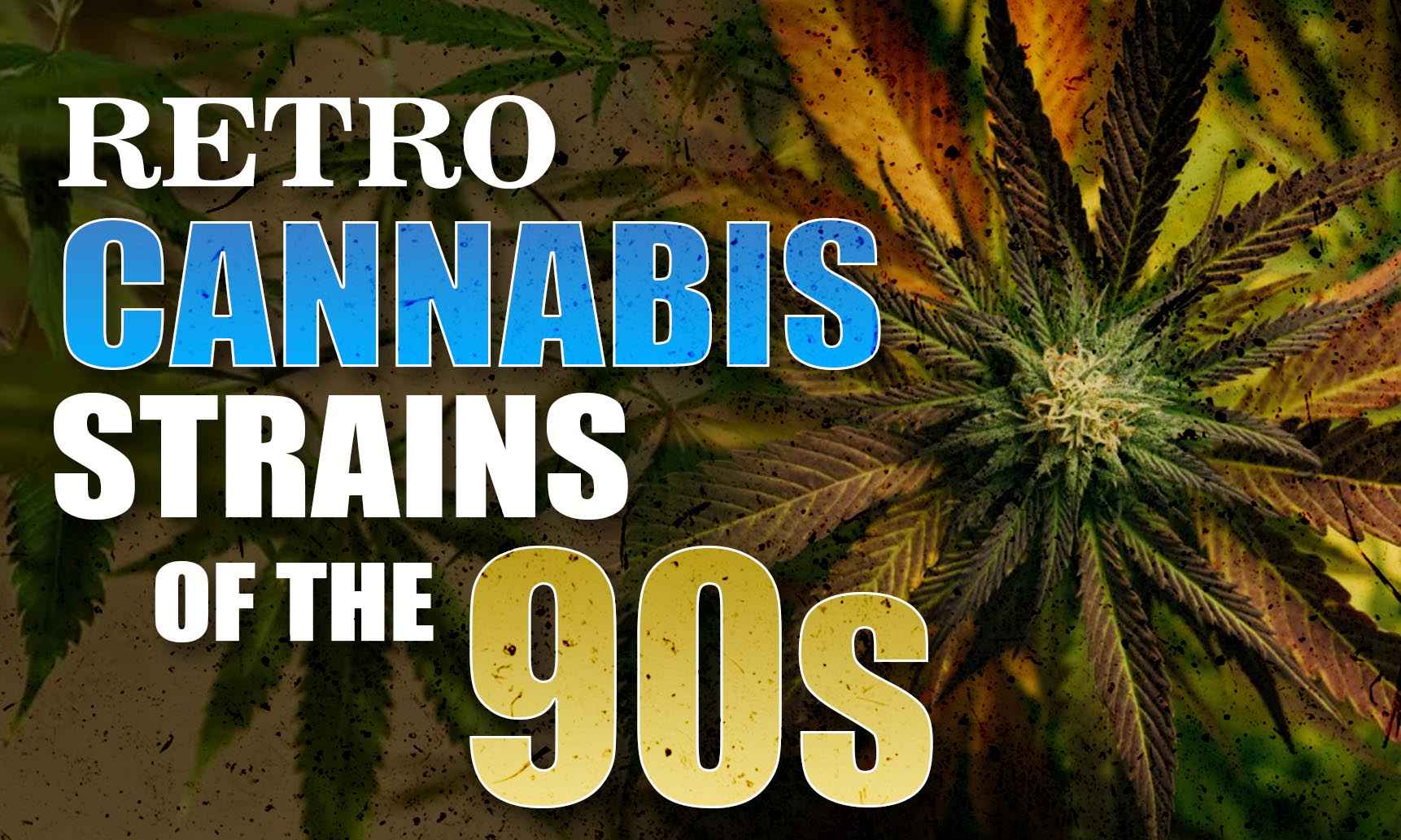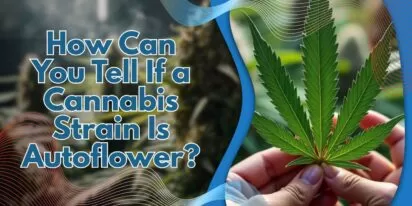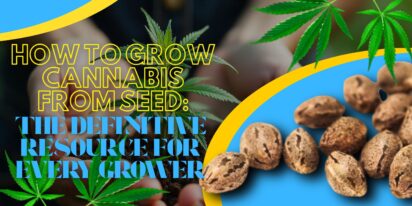Table of Contents

Table of Contents
The 90s were a transformative period for cannabis culture. It was a time when the counterculture movement of the 1960s and 70s had matured into a widespread acceptance of cannabis as a recreational substance. The 90s witnessed an emergence of a vibrant and diverse weed culture, from college campuses to underground music scenes. It became a symbol of rebellion and freedom, representing a break from conventional norms.
But it wasn’t just about rebellion; it was about unity and bonding. Cannabis was the common thread that brought people together. Sharing a joint or passing a homemade bong was a social activity that transcended boundaries. It was a way for friends and strangers alike to connect, talk, and unwind. The 90s weed culture was characterized by an ethos of communal enjoyment and celebration of the plant.
One of the distinctive features of 90s weed was its appearance. Cannabis from this era often came in colorful and psychedelic packaging, reflecting the spirit of the times. The buds themselves were less potent compared to contemporary strains, but they had a unique charm.
They were typically laden with seeds, which needed to be meticulously removed before consumption. Rolling a joint with 90s weed often meant dealing with stems and seeds, but it was all part of the experience.
The aroma of 90s weed was also distinct, often characterized by earthy, skunky, or spicy notes. It’s worth noting that the genetic diversity of cannabis strains was not as extensive as it is today. So, while the aroma and flavor profiles were less varied, they carried a certain nostalgic appeal. Smoking 90s weed was a sensory journey in itself, with each puff evoking memories of a bygone era.
When reminiscing about 90s weed, several iconic strains come to mind. These strains not only contributed to the popularity of cannabis during that decade but also left a lasting legacy. Let’s delve into some of the most sought-after 90s weed strains:
Northern Lights is an iconic indica strain that gained fame for its relaxation-inducing properties. It was a staple choice for those seeking stress relief and a good night’s sleep. The strain’s sweet and earthy flavor profile, coupled with a tranquilizing high, made it a beloved classic.
Skunk #1 is another legendary strain known for its pungent aroma and balanced effects. It offered a mix of cerebral euphoria and physical relaxation, making it a versatile choice for various occasions. The name “Skunk” originated from its unmistakable scent, which was a defining characteristic.
Haze strains were cherished for their uplifting and energizing effects. They were favored by creative minds looking to enhance focus and inspiration. The citrusy and fruity flavors of Haze strains added to their appeal.
These strains, along with others like “Blueberry,” “White Widow,” and “AK-47,” contributed to the diverse cannabis landscape of the 90s. Each strain had its own unique characteristics, offering a wide range of experiences for cannabis enthusiasts. These strains have become a part of cannabis history, and some are still cultivated and cherished by connoisseurs today.
Smoking 90s weed was an adventure in itself. The slow burn, the earthy taste, and the soothing high were all part of the charm. It was a time when rolling papers and homemade bongs were essential tools for any weed enthusiast. The act of sharing a joint with friends, passing it around while listening to your favorite grunge band, created memories that would last a lifetime.
The experience of smoking 90s weed was often a communal one. It brought people together in a way that transcended age, background, and differences. It was a shared ritual, a moment of connection and relaxation. The slow pace of life back then allowed for deep conversations and introspection, all while the aromatic smoke hung in the air.
While the potency of 90s weed was lower compared to modern strains, it had its own allure. The gentle euphoria it provided was perfect for unwinding after a long day or simply enjoying the company of friends. It encouraged a slower pace, where moments were savored, and laughter flowed freely. The experience of 90s weed was not just about getting high; it was about enjoying the journey.
Fast forward to today, and the cannabis landscape has transformed dramatically. Weed is now legal in many places, and there’s a dizzying array of strains to choose from. The potency of modern weed strains far exceeds that of 90s weed, thanks to advances in cultivation techniques. If you’re used to today’s high-THC strains, smoking 90s weed might feel like a trip back in time.
The evolution of cannabis cultivation has led to a significant increase in THC content. While 90s weed typically had THC levels ranging from 5% to 15%, modern strains can easily exceed 30% THC. This has brought about a shift in the effects experienced by users. Modern cannabis often delivers a more potent and immediate high, which can be overwhelming for some.
Beyond potency, the variety of strains available today is staggering. From indica and sativa hybrids to strains rich in CBD (cannabidiol), consumers have a plethora of options to tailor their experience. Terpene profiles, which influence the flavor and aroma of cannabis, are also a focus of modern breeders. This means that not only is the THC content higher, but the sensory experience of consuming cannabis has become more diverse and refined.
Believe it or not, some enthusiasts are on a quest to rediscover the classic 90s strains. While they may not be as prevalent as they once were, dedicated growers and seed banks are working to preserve these nostalgic varieties. So, if you’re yearning for a taste of the past, you might just be able to find some authentic 90s weed strains.
Many cannabis enthusiasts view 90s strains as a piece of history worth preserving. These strains represent a different era in cannabis culture, and they evoke a sense of nostalgia for those who experienced it. Thanks to the dedication of growers and breeders, these strains are not entirely lost to time.
Some growers specialize in heirloom or landrace strains, which are cannabis varieties that have been cultivated in their natural environment for generations. These strains are often the closest you can get to the cannabis of the past. Additionally, some seed banks offer seeds of classic 90s strains, allowing you to cultivate your own piece of cannabis history.
Let’s dive into the fascinating world of comparisons between 90s weed and modern strains. The differences are stark, and understanding them can help you appreciate the evolution of cannabis over the years.
Understanding these differences can help you navigate the world of cannabis with greater insight. Whether you’re a connoisseur of 90s weed or a modern enthusiast, both eras have their unique charms and offerings. It’s all about personal preference and the experience you seek.
What is it about 90s weed that still captivates us today? It’s more than just nostalgia; it’s a connection to a simpler time. The enduring appeal of 90s weed lies in several key factors:
If you’re inspired to try your hand at growing some 90s weed strains today, you’re in luck. Many of these classic varieties are still available as seeds. However, keep in mind that the cultivation techniques have come a long way since the 90s. Here’s a brief overview of how to get started:
Growing 90s weed strains can be a rewarding experience, allowing you to savor the flavors and effects of a bygone era. It’s a journey that connects you to the past while embracing the advancements of the present.
The influence of 90s weed culture can still be seen in pop culture today. From movies like “Dazed and Confused” to songs by artists like Cypress Hill, the 90s left an indelible mark on the way we perceive and celebrate cannabis. Let’s explore some of the ways 90s weed continues to shape our cultural landscape:
Artistic Expression: Cannabis-inspired art and fashion were prevalent in the 90s. From psychedelic posters to clothing adorned with cannabis leaves, the plant became a recurring motif in the visual arts. This artistic expression continues to thrive today, with cannabis-inspired art gaining recognition and value.
Ongoing Influence: Even contemporary artists continue to reference 90s weed culture in their lyrics. Whether it’s a nod to classic strains or a mention of iconic 90s stoner movies, these references serve as a bridge between past and present cannabis enthusiasts.
In conclusion, the 90s were a magical time for cannabis enthusiasts, and their love for the plant continues to endure. The strains that defined that era may have mellowed with time, but their legacy lives on. Whether you’re a seasoned stoner or a curious newcomer, exploring 90s weed strains is a journey worth taking. It’s an opportunity to connect with a rich cultural history and experience the simplicity and camaraderie of a bygone era.
As cannabis continues to evolve and gain acceptance worldwide, it’s essential to appreciate the roots from which it sprang. The 90s were a pivotal period in the journey toward cannabis normalization, and the influence of that era can still be felt today. So, roll up a joint, put on some Nirvana, and transport yourself back to the days of grunge and good vibes. As you do, remember that cannabis, like the memories it invokes, remains a timeless and cherished part of our culture.
1. Can I still find 90s weed strains today?
Absolutely! While they may not be as common as modern strains, dedicated growers and seed banks are preserving these classics. Look for heirloom or landrace strains for an authentic 90s experience.
2. How does 90s weed compare to modern strains in terms of potency?
90s weed tends to have lower THC levels compared to modern strains, which are often much more potent. It’s a matter of personal preference and tolerance.
3. What were some other popular 90s weed strains besides the ones mentioned in the article?
Some other notable 90s weed strains include “Blueberry,” “White Widow,” and “AK-47,” each with its own unique characteristics and fan base.
4. Did people smoke weed differently in the 90s compared to today?
In some ways, yes. Rolling joints and using homemade smoking devices were more common in the 90s. Today, there are various consumption methods, including vaporizers, edibles, and concentrates.
5. Has the flavor of 90s weed changed over the years?
The flavor of 90s weed was distinctive with earthy and sometimes spicy notes. Modern strains often have a wider range of flavors due to selective breeding and genetic manipulation. The diversity of flavors in modern cannabis is a testament to the ongoing evolution of the plant.

Curious about growing weed in a healthy, effective way? Welcome to the realm of weed hydro! This method uses water instead of soil, delivering n

Peyote Zkittlez is a unique cannabis strain that has quickly gained dedicated followers among enthusiasts and patients alike. Its parentage—Zk

As growers, we want strains that work well, are strong, and are of good quality. Autoflowering cannabis strains are a big step forward for both

Pot growers always ask the same basic question: How much weed does a weed plant produce? The answer is complex and depends on a multitude of var

Ever had the room spin after a few hits? You're not alone. Figuring out how to prevent getting dizzy high can make your cannabis experience a wh

Drying cannabis properly is a critical process in preserving the plant's full aroma and flavor and its psychoactive abilities. Tampering with th

Ever caught yourself a bit too high and all of a sudden in need of being normal? Whether you're heading out for munchies or bumping into someone

Looking for sage advice on how not to get pinched with weed without batting an eye? Attempting to protect your stash from gossipy roommates, sno

Nutrient lockout, also known as nutrient binding or chemical antagonism, is a significant issue in cannabis cultivation that negatively impacts

Germination is the most critical initial stage in growing healthy, high-quality cannabis plants. During germination, the dormant seed becomes a
Are You 18 Or Over?
By selecting “Continue”, you confirm that you are at least 18 years of age and legally permitted to access cannabis related content in your region.
By using Rocketseeds.com, you agree to our legal disclaimer.
Excellent blog here Also your website loads up very fast What web host are you using Can I get your affiliate link to your host I wish my web site loaded up as quickly as yours lol
Your writing is not only informative but also incredibly inspiring. You have a knack for sparking curiosity and encouraging critical thinking. Thank you for being such a positive influence!
Simply wish to say your article is as amazing The clearness in your post is just nice and i could assume youre an expert on this subject Well with your permission let me to grab your feed to keep updated with forthcoming post Thanks a million and please carry on the gratifying work
Somebody essentially lend a hand to make significantly articles Id state That is the very first time I frequented your website page and up to now I surprised with the research you made to make this actual submit amazing Wonderful task
Your blog is a beacon of light in the often murky waters of online content. Your thoughtful analysis and insightful commentary never fail to leave a lasting impression. Keep up the amazing work!
Thank you for the auspicious writeup It in fact was a amusement account it Look advanced to more added agreeable from you By the way how could we communicate
Your blog is a constant source of inspiration for me. Your passion for your subject matter shines through in every post, and it’s clear that you genuinely care about making a positive impact on your readers.
Your blog is a constant source of inspiration for me. Your passion for your subject matter is palpable, and it’s clear that you pour your heart and soul into every post. Keep up the incredible work!
Your articles never fail to captivate me. Each one is a testament to your expertise and dedication to your craft. Thank you for sharing your wisdom with the world.
Your blog is a testament to your dedication to your craft. Your commitment to excellence is evident in every aspect of your writing. Thank you for being such a positive influence in the online community.
Your writing has a way of resonating with me on a deep level. I appreciate the honesty and authenticity you bring to every post. Thank you for sharing your journey with us.
Your blog is a true gem in the world of online content. I’m continually impressed by the depth of your research and the clarity of your writing. Thank you for sharing your wisdom with us.
Hi i think that i saw you visited my web site thus i came to Return the favore Im attempting to find things to enhance my siteI suppose its ok to use a few of your ideas
Somebody essentially help to make significantly articles Id state This is the first time I frequented your web page and up to now I surprised with the research you made to make this actual post incredible Fantastic job
Usually I do not read article on blogs however I would like to say that this writeup very compelled me to take a look at and do so Your writing taste has been amazed me Thanks quite nice post
Your blog has quickly become one of my favorites. Your writing is both insightful and thought-provoking, and I always come away from your posts feeling inspired. Keep up the phenomenal work!
Every time I visit your website, I’m greeted with thought-provoking content and impeccable writing. You truly have a gift for articulating complex ideas in a clear and engaging manner.
Hey there You have done a fantastic job I will certainly digg it and personally recommend to my friends Im confident theyll be benefited from this site
I have read some excellent stuff here Definitely value bookmarking for revisiting I wonder how much effort you put to make the sort of excellent informative website
Nice blog here Also your site loads up very fast What host are you using Can I get your affiliate link to your host I wish my site loaded up as quickly as yours lol
What i do not understood is in truth how you are not actually a lot more smartlyliked than you may be now You are very intelligent You realize therefore significantly in the case of this topic produced me individually imagine it from numerous numerous angles Its like men and women dont seem to be fascinated until it is one thing to do with Woman gaga Your own stuffs nice All the time care for it up
Your blog is a beacon of light in the often murky waters of online content. Your thoughtful analysis and insightful commentary never fail to leave a lasting impression. Keep up the amazing work!
Your blog is a breath of fresh air in the often stagnant world of online content. Your thoughtful analysis and insightful commentary never fail to leave a lasting impression. Thank you for sharing your wisdom with us.
Your blog is a beacon of light in the often murky waters of online content. Your thoughtful analysis and insightful commentary never fail to leave a lasting impression. Keep up the amazing work!
Usually I do not read article on blogs however I would like to say that this writeup very compelled me to take a look at and do it Your writing style has been amazed me Thank you very nice article
Your writing has a way of resonating with me on a deep level. I appreciate the honesty and authenticity you bring to every post. Thank you for sharing your journey with us.
This hydroponics guide is quite the buzz, seriously! Who knew growing weed without dirt could be so complicated yet potentially rewarding? The breakdown of systems like DWC and NFT is helpful, though I suspect my cat might confuse the air pump for a toy. The idea of cleaner buds is tempting, especially since explaining hydro weed to my non-growing friends might get messy. And the bit about potential dizziness from hydro weed? Perfect, now I have an excuse for why I always stumble a bit after a grow session. Still, the promise of faster grows and higher yields is hard to ignore, even if it means more trips to the pH meter than to the coffee shop. Overall, a cultivating read for the curious grower!